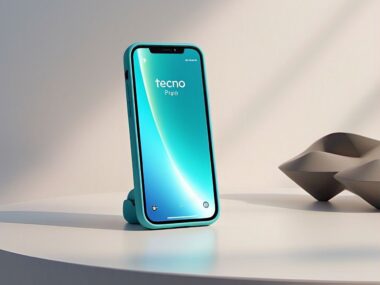In Nigeria, Keke Napep—the ubiquitous tricycle—remains a linchpin of daily life, ferrying passengers through crowded cities and rural paths alike. Known for affordability and maneuverability, these three-wheeled vehicles have evolved into a symbol of resilience amid economic flux. As we navigate 2025, understanding the cost of Keke Napep in Nigeria is essential for buyers, whether for personal use or commercial gain. We present an exhaustive breakdown of prices, brands, and market trends, ensuring you’re equipped with the most detailed insights to make an informed decision.
Table of Contents
ToggleThe Rise of Keke Napep in Nigeria
The term Keke Napep traces its roots to the National Poverty Eradication Programme (NAPEP), launched in 2001 to combat unemployment. Tricycles were introduced as an income-generating tool, quickly gaining traction after the 2012 motorcycle ban in major cities. Today, they dominate short-distance transport, with brands like Bajaj, TVS, and Piaggio leading the charge. Their popularity stems from low running costs, ease of maintenance, and ability to navigate Nigeria’s often-challenging roads. In 2025, their relevance endures as fuel prices soar and urban congestion worsens.
Keke Napep Prices in Nigeria 2025
The cost of a Keke Napep in 2025 hinges on factors like brand, condition, and purchase location. We’ve sourced the latest figures from dealers in Lagos, Kano, Abuja, and online platforms to provide a clear snapshot.
- New Keke Napep Prices
- Bajaj RE: ₦2,600,000 – ₦3,500,000
A market leader, Bajaj offers a 200cc engine, a top speed of 60 km/h, and a payload capacity of 350kg, making it a go-to for commercial operators. - TVS King Deluxe: ₦2,700,000 – ₦2,900,000
With a fuel efficiency of 35-40 km/l and a lightweight frame, TVS tricycles are prized for cost savings over time. - Piaggio Ape: ₦1,800,000 – ₦2,500,000
Piaggio’s spacious cabin and 36 km/l mileage cater to comfort-focused buyers. - Daylong: ₦2,000,000 – ₦2,600,000
A rising contender, Daylong tricycles balance affordability with solid performance, appealing to budget buyers.
- Bajaj RE: ₦2,600,000 – ₦3,500,000
- Used Keke Napep Prices
- Bajaj (2019-2022): ₦800,000 – ₦1,500,000
- TVS (2020-2023): ₦700,000 – ₦1,400,000
- Piaggio (2018-2021): ₦600,000 – ₦1,200,000
Used units offer value, though engine wear and part availability vary.
These prices, gathered from marketplaces like Jiji.ng and dealerships in Onitsha and Ibadan, reflect April 2025 trends. Regional differences and inflation may adjust these figures slightly.
What Drives Keke Napep Costs in 2025?
Several dynamics shape the price of Keke Napep in Nigeria. We explore the most impactful:
- Currency Fluctuations
With the naira at ₦1,600 to $1 in 2025, imported tricycles and parts face steep costs, inflating retail prices by 15-20% compared to 2023. - Brand Reputation
Bajaj’s dominance commands a premium, while lesser-known brands like Daylong offer competitive pricing for similar specs. - New vs. Used
New units include warranties and peak performance, while used Keke Napeps trade lower costs for potential repair needs. - Geographic Variance
Urban hubs like Lagos see prices 5-10% higher than rural areas like Enugu due to logistics and demand. - Fuel Innovations
CNG-powered Keke Napeps, backed by government initiatives, cost ₦2,800,000 – ₦3,700,000 but promise 50% fuel savings over petrol models.
Where to Purchase Keke Napep in Nigeria
Finding the best deal requires strategic sourcing. We outline prime options:
- Dealerships
- Simba Group (Lagos, Kano): TVS distributor with financing plans.
- Boulos Enterprises (Lagos): Piaggio specialist with robust support.
- Kojo Motors (Abuja): Multi-brand dealer offering Bajaj and Daylong.
- Online Platforms
Jumia.ng and Jiji.ng feature extensive listings, complete with seller ratings and negotiation options. - Physical Markets
Ladipo Market (Lagos) and Sabon Gari Market (Kano) provide hands-on inspection and haggling opportunities, especially for used units.
Additional Costs of Owning a Keke Napep
The purchase price is just the beginning. We detail ongoing expenses:
- Registration: ₦50,000 – ₦100,000, varying by state.
- Insurance: ₦30,000 – ₦60,000 annually for comprehensive plans.
- Maintenance: ₦20,000 – ₦50,000 yearly, covering oil, tires, and brakes.
- Fuel: Petrol at ₦1,000/liter means ₦5,000 per 5-liter fill-up; CNG cuts this to ₦2,500.
Read also: How Much Is a Mini Bus (Korope) in Nigeria? 2025 Price Guide
Is Keke Napep a Smart Investment in 2025?
For commercial operators, Keke Napep yields solid returns. In Lagos, daily earnings range from ₦5,000 – ₦12,000, or ₦150,000 – ₦360,000 monthly, pre-expenses. Hire-purchase schemes (e.g., ₦5,000 daily payments) make ownership accessible, though rising fuel and spare part costs squeeze margins. For personal use, they excel in bypassing traffic and reducing transport expenses, especially in smaller towns.
Comparing Keke Napep Brands for Value
We assess top brands to pinpoint the best fit:
- Bajaj: Unmatched durability and resale value; ideal for heavy use.
- TVS: Superior fuel economy and affordable parts; great for cost-conscious owners.
- Piaggio: Comfort and mileage standout; suits passenger routes.
- Daylong: Budget-friendly with decent reliability; a solid entry-level choice.
How to Buy Keke Napep Wisely in Nigeria
We recommend these steps for a smart purchase:
- Compare prices across dealers and platforms.
- Test-drive used units and check engine health with a mechanic.
- Ensure all papers (title, registration) are legit.
- Bargain—vendors often drop 5-10% with persistence.
- Consider CNG models for long-term savings.
Read also: How Much Is a Wheelbarrow in Nigeria? 2025 Price Guide
The Future of Keke Napep in Nigeria
Looking ahead, Keke Napep’s role is poised to grow. With petrol prices climbing and CNG adoption accelerating, eco-friendly models may dominate by 2030. Local assembly efforts, like those by Innoson Vehicle Manufacturing, could lower costs if scaled. For now, staying abreast of market shifts ensures you snag the best value in 2025.


